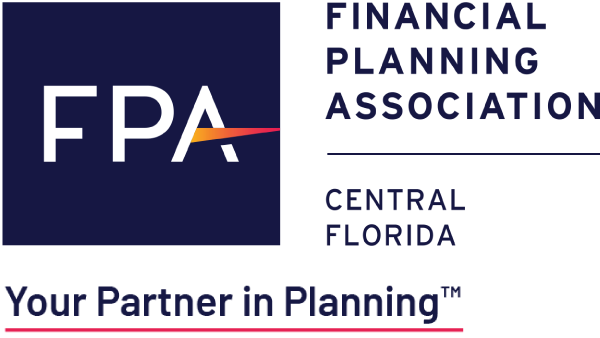
Inside the SECURE ACT: How New Law Could Impact Your Money, Your Savings Habits and Your Retirement
When the SECURE Act became law in late 2019, it was widely hailed as a step forward for people seeking greater financial security and flexibility in retirement.

“Passing the SECURE Act is a big victory that will help ensure that all hard-working Americans have a chance to build a nest egg for their retirement,” said Ohio Republican Sen. Rob Portman, who devised and championed some provisions of the law.
Prudential, a large insurance company that offers a range of retirement savings vehicles, said the law “contains the most significant legislative enhancements to the private-sector retirement system in over a decade and will improve the retirement readiness of millions of Americans.”
As broadly lauded as the SECURE Act (the tidy acronym stands for Setting Every Community Up for Retirement Enhancement) was upon its passage, whether it has the desired impact in helping to remedy America’s retirement savings shortcomings likely won’t become clear for some time. Many of its provisions took hold Jan. 1, 2020. The law is widely viewed as an incremental policy step toward giving retirement savers greater means and incentive to create a secure financial future for themselves, but hardly a panacea for an overall savings shortfall that today has many people financially ill-prepared for retirement.
“There is still more that we can do to help more Americans save for their retirement,” Portman said in a statement. “I believe that passage of the SECURE Act can help pave the way for bolder reforms in legislation.”
As for how the law will impact people and families, FPA member and CERTIFIED FINANCIAL PLANNER™ professional Kristin McKenna of Darrow Wealth Management in Concord, Mass., said it’s too early to tell. “It’s going to depend on a person’s individual circumstances, and a lot of people may not feel any impact for a while. The folks who I expect will feel its impact the soonest will be those who are nearing retirement.”
Whether you’re a person for whom retirement is a current reality, an approaching likelihood or a remote, decades-away consideration, chances are strong you’ll be affected to some extent by the SECURE Act. What exactly is in the new law? Which of its provisions will affect whom, and when? Here’s a look at some of the key aspects of the law, with insight from a handful of CERTIFIED FINANCIAL PLANNER™ professionals on their potential impact.
Lifting of the age limitation on contributions to a traditional IRA. Under previous law, a person could only contribute to a traditional IRA up until age 70½. Under the SECURE Act, people can continue to make IRA contributions regardless of age, provided they continue to earn income from employment. This adjustment reflects a trend in which people are choosing to work past traditional retirement age; it also aligns traditional IRA contribution rules with rules for 401(k)s and Roth IRAs.
Increasing from 70.5 to 72 the age at which people with qualified retirement accounts [traditional IRAs, 401(k)s, etc.] must begin taking required minimum distributions (RMDs) from those accounts. With this provision, which applies beginning with people who turn 70.5 in 2020, retirement savers gain additional latitude in managing their retirement account withdrawals. They also gain additional time for the assets in those accounts to potentially increase in value. “This is a very positive change for most of our clients,” said FPA member Amy Shepard, CFP®, with Sensible Money, a financial planning firm in Scottsdale, AZ. “It gives them an extra 18 months to defer the tax implications of RMDs, which opens up more flexibility for tax-efficient planning.” For example, she notes, people will have additional time to convert assets in traditional retirement accounts to Roth assets.
Eliminating the lifetime stretch provision for people who inherit a retirement account, and replacing it with a 10-year window for taking distributions from those inherited accounts.
Under prior law, a person inheriting an IRA or 401(k) had the option of “stretching" the distributions they take from that account over their lifetime. Effective in 2020, the new rules require these inheriting non-spouse beneficiaries to withdraw assets from the inherited account within 10 years of the original account-holder’s death. There are notable exceptions to the new 10-year requirement, however. It does not apply to a surviving spouse, nor to a minor child, a disabled or chronically ill beneficiary, or to beneficiaries who are less than 10 years younger than the original account owner.
Despite those exceptions, some financial professionals say the demise of the lifetime stretch provision for inherited retirement plans could complicate tax planning for people inheriting a retirement account. “For those consumers who expect to inherit assets from their parents at some point, this can have a major impact on their tax situation,” said Shepard, “especially those consumers who are nearing retirement themselves and trying to manage their own taxes closely.”
The SECURE Act did provide inheriting beneficiaries with flexibility in when they make retirement account withdrawals within that 10-year window, she noted, by eliminating annual RMDs from those inherited accounts and instead allowing inheriting beneficiaries to take distributions at their own pace, as long as the entire amount in the account is drawn down within the required 10 years.
Giving long-term, part-time workers the opportunity to participate in a defined-contribution plan. Under prior law, people who worked less than 1,000 hours per year generally were ineligible to participate in their employer’s defined-contribution [401(k), etc.] retirement plan. The SECURE Act requires employers that offer a defined-contribution plan to provide access to their plan to long-term, part-time workers who work at least 500 hours each year for three consecutive years and are age 21 or older. That three-year lookback window opened as of Jan. 1, 2020, meaning 2024 is the earliest that qualifying part-time employees can start benefitting from the provision, according to McKenna.
Creating opportunities for retirement plan sponsors to offer workers more lifetime income vehicles inside retirement accounts. With the decline of pension plans, Americans have been seeking ways to turn their retirement account assets into a guaranteed income stream for retirement. The SECURE Act opens the door for retirement plan sponsors to include new options for plan participants to convert plan assets into retirement income via annuity-like vehicles. Employers had been reluctant to offer these so-called “in-plan annuities” because of potential liability issues if the annuities failed to perform as promised. The new law addresses that concern by giving employers a “safe harbor” that protects them from liability when offering an in-plan annuity to employees. It also gives these in-plan annuities portability, whereby employees, if they switch jobs, can transfer their annuity to another plan without incurring surrender charges or fees.
Making it easier for smaller businesses to participate in multi-employer retirement plans so they can offer their employees access to retirement accounts. This provision seeks to relieve small businesses of the high administrative cost burden associated with offering a retirement plan to employees. It allows otherwise unrelated small employers to participate in open multi-employer plans (MEPs) so they can offer their employees a retirement plan while sharing plan administrative costs and responsibilities with other employers in the MEP. The SECURE Act also protects companies participating in an MEP by removing the so-called “one bad apple” rule under which all employers that are part of an MEP could face adverse tax consequences if one employer MEP participant failed to meet certain requirements.
Increasing the cap for employee auto-enrollment contributions to an employer-sponsored retirement plan from 10% of pay to 15% to encourage greater employee retirement savings. Employees whose workplace retirement plan has automatic enrollment now can have up to 15% of their pay automatically directed into their retirement plan.
Allowing parents to withdraw up to $5,000 from retirement accounts penalty-free within a year of the birth or adoption of a child to use those funds to cover qualified expenses. While this SECURE Act provision gives new parents additional financial flexibility, McKenna said she’s “not a big fan” of people tapping their retirement accounts prematurely unless there’s a financial emergency and the person has no other alternative. Otherwise, the person is better off leaving that money in their retirement account, where it has the potential for compounded growth over the long-term.
Allowing parents to withdraw up to $10,000 from tax-favored 529 education savings plans to repay student loans. This provision “makes a ton of sense,” said McKenna. “To have the option of using the extra money in a 529 plan to pay down a student loan debt, I think, is a great value-add” for plan participants. The provision carries a lifetime limit of $10,000 per beneficiary and $10,000 per each of the beneficiary's siblings.
Expanding 529 college plan eligibility to include apprenticeship programs. Under the new law, funds from 529 plans can be used to cover the cost of registered apprenticeship programs, a boon for the hundreds of thousands of people who opt to pursue apprenticeships instead of college. McKenna said she endorses the change. “This should have been done a long time ago.”

